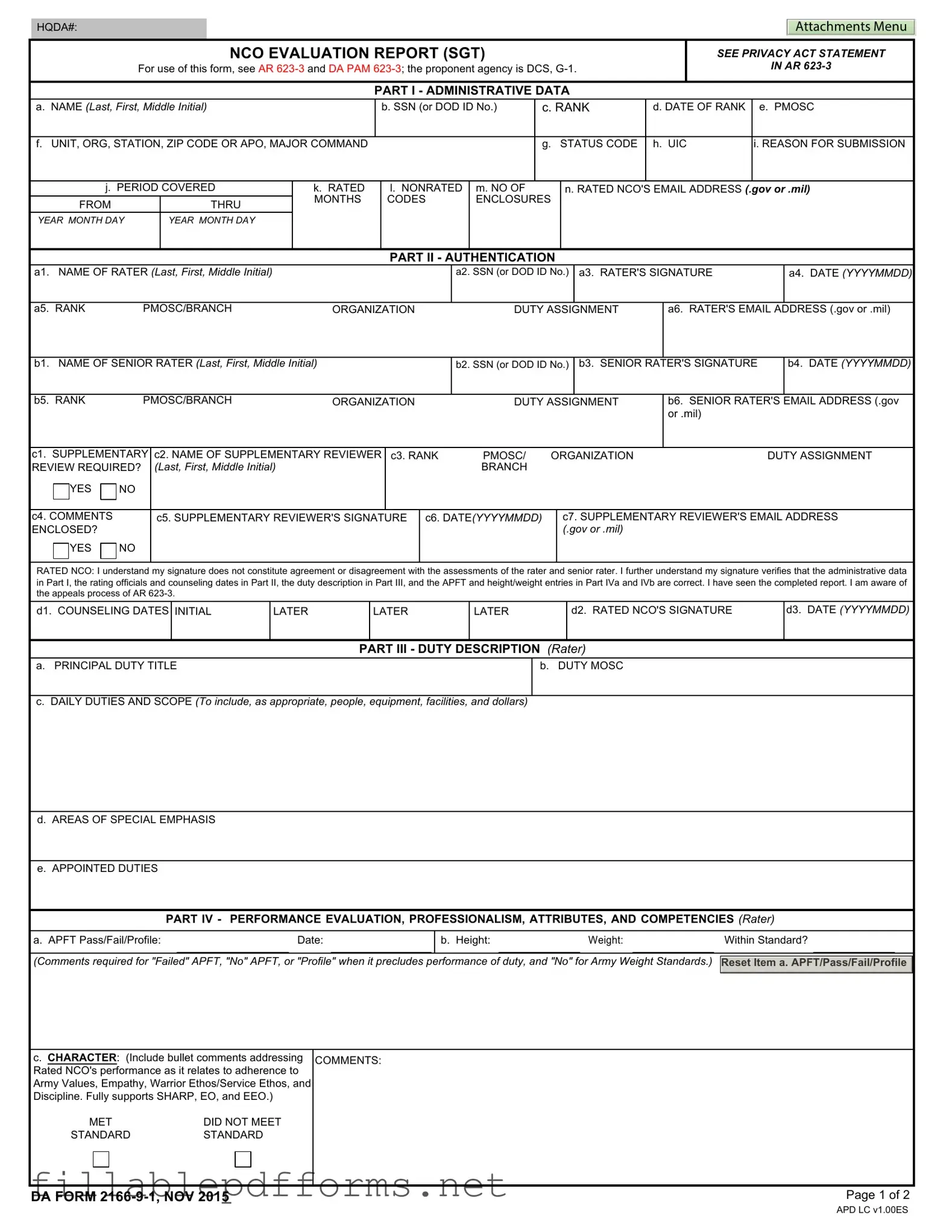The DA Form 2166-9-1 serves as a crucial tool in the evaluation of Non-Commissioned Officers (NCOs) within the U.S. Army, specifically designed for the assessment of Sergeants. This form is not just a document; it embodies a structured approach to capturing an NCO's performance and potential over a designated period. It encompasses various sections that require detailed administrative data, including the NCO's name, Social Security Number, rank, and unit information. Furthermore, the form facilitates an evaluation process that involves multiple levels of review, starting from the rater to the senior rater, and potentially including supplementary reviewers. Each evaluator provides insights into the NCO's daily duties, professional attributes, and competencies, which are vital for career progression. The form also emphasizes the importance of character, presence, intellect, leadership, development, and achievement, ensuring a comprehensive assessment. Additionally, it includes a section for the rated NCO to acknowledge their understanding of the evaluation and the appeals process, reinforcing transparency and accountability in the evaluation system. As such, the DA Form 2166-9-1 is integral to fostering professional growth and maintaining the standards of excellence expected within the Army.
